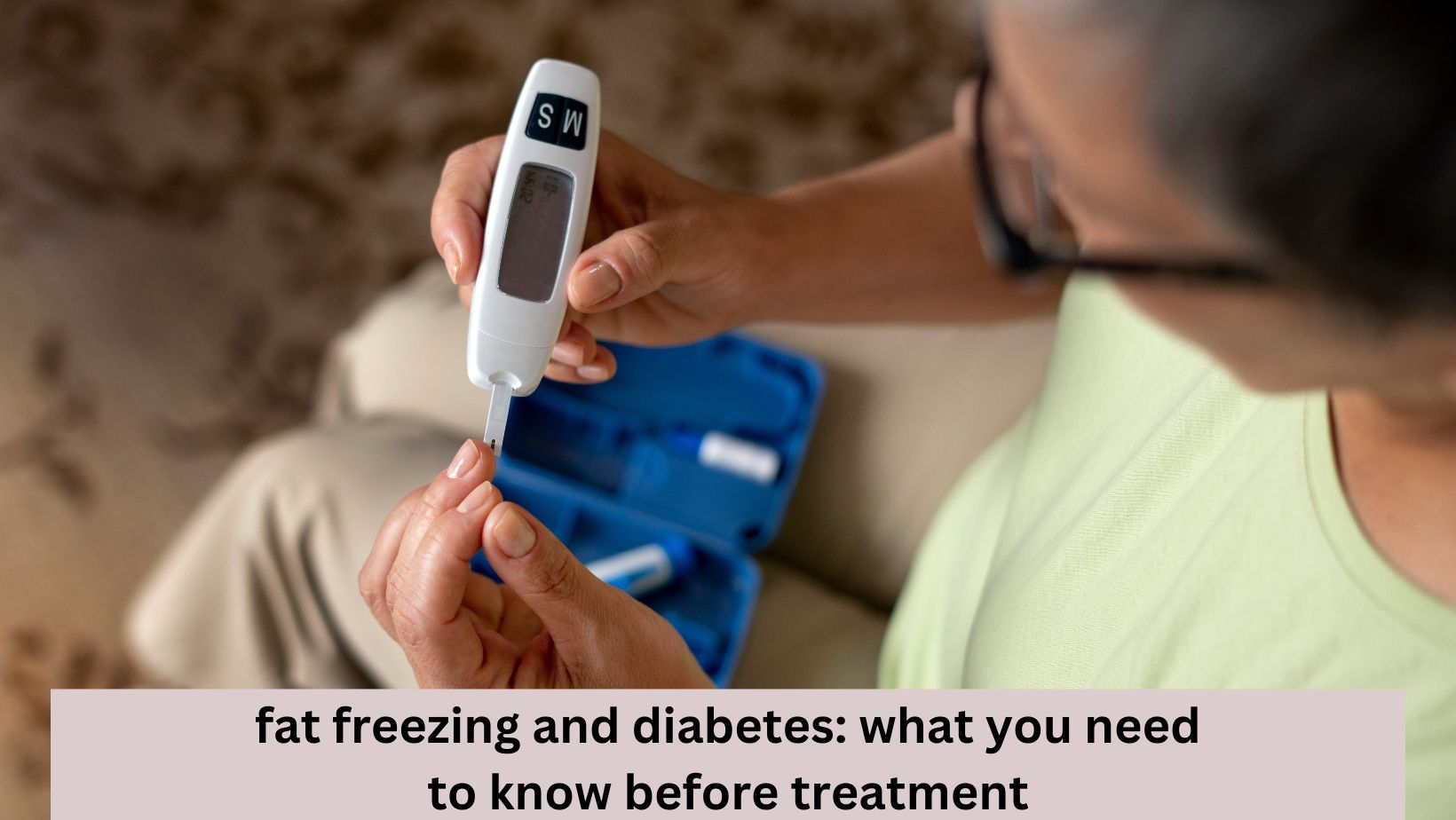
Fat Freezing And Diabetes: What You Need To Know Before Treatment
At Carvers, we believe in empowering individuals to achieve their body goals through safe, effective, and advanced procedures. One such method that has gained popularity is fat freezing, also known as cryolipolysis. However, for individuals with diabetes, it is essential to take additional precautions before undergoing any aesthetic procedure. If you are diabetic and considering fat freezing as a means to contour your body, it’s important to understand how the procedure may interact with your condition.
In this article, we’ll explore the relationship between fat freezing and diabetes, what factors to consider, and how to ensure that your treatment is safe and effective.
What is Fat Freezing?
Fat freezing, also known as cryolipolysis, is a non-invasive treatment designed to reduce stubborn fat pockets that are resistant to diet and exercise. During the procedure, fat cells in targeted areas are exposed to extremely low temperatures, which causes them to freeze and die. These deceased fat cells are gradually processed by the body and removed by the lymphatic system. Fat freezing has become a popular option for body sculpting, as it requires no surgery, has minimal downtime, and delivers gradual but noticeable results.
How Diabetes Affects the Body and Recovery Process
Diabetes is a chronic condition that impacts blood sugar regulation and circulation. Individuals with diabetes often experience impaired wound healing, nerve damage (neuropathy), and reduced immune function. These factors can increase the risks associated with certain cosmetic procedures. Here are some key ways diabetes can affect the body’s ability to recover:
1.Circulatory Issues: Poor blood flow can slow down the body’s ability to recover from any physical stress or inflammation.
2.Peripheral Neuropathy: Nerve damage, especially in extremities, can result in reduced sensation in treated areas, making it harder to detect any signs of complications.
3.Weakened Immune Response: A slower immune system can make it difficult for the body to respond to minor injuries or inflammation effectively.
4.Blood Sugar Spikes: Any physical stress can potentially raise blood sugar levels, which may need careful monitoring during the recovery phase.
Given these factors, diabetics must take extra care when opting for fat freezing to ensure a safe and successful experience.
Is Fat Freezing Safe for People with Diabetes?
Fat freezing is generally considered a safe procedure. However, for people with diabetes, individual health conditions must be carefully assessed before proceeding with the treatment. Below are key considerations for diabetics looking to undergo fat freezing:
1.Peripheral Neuropathy Concerns
If you have neuropathy, you may not feel discomfort or cold sensations during the procedure, which can increase the risk of overexposure to cold temperatures and potential tissue damage. At Carvers, we recommend working with practitioners experienced in treating clients with diabetes to ensure that the procedure is performed safely.
2.Skin Sensitivity and Healing Issues
Diabetes can make the skin more prone to injuries, and the natural healing process might take longer. Although fat freezing is non-invasive, some people experience bruising, redness, or swelling in the treated areas. For individuals with diabetes, it’s essential to closely monitor these side effects and contact a healthcare professional if they persist.
3.Blood Sugar Control
Undergoing any cosmetic treatment can place mild stress on the body, potentially leading to fluctuations in blood sugar levels. It is advisable to monitor your blood glucose before and after the procedure to avoid any complications.
4.Infection Risks
Although fat freezing is non-surgical, it’s important to maintain good hygiene practices during and after treatment to avoid any infections. Individuals with diabetes have a higher risk of infections and should ensure that the treatment environment meets the highest safety and hygiene standards.
Precautions to Take Before Fat Freezing
If you are diabetic and considering fat freezing, taking the following precautions can help you ensure a safe and smooth experience:
1.Consult with Your Doctor
Before undergoing fat freezing, it’s essential to consult with your primary healthcare provider or endocrinologist. They can assess your condition and advise whether your diabetes is well-managed enough to undergo the procedure.
2.Choose an Experienced Clinic
At Carvers, we prioritize client safety and tailor our treatments to individual needs. Ensure that you choose a clinic experienced in working with clients who have chronic conditions like diabetes. A skilled provider will closely monitor the treatment process, ensuring you are comfortable throughout.
3.Monitor Blood Sugar Levels
Keep a close watch on your blood sugar levels before, during, and after the procedure. Bring your medication or insulin along if needed, and inform the practitioner of any fluctuations so they can provide appropriate support.
4.Plan Your Recovery Period
Although fat freezing requires little to no downtime, allow your body adequate time to rest and recover after the procedure. Avoid strenuous activities and monitor the treated areas for any signs of complications, such as excessive swelling or discomfort.
5.Hydrate and Maintain a Healthy Diet
Staying hydrated and following a balanced diet can help support your immune system and recovery. Avoid alcohol or sugary foods that may cause blood sugar levels to spike after the treatment.
What to Expect After the Procedure
For individuals with diabetes, it’s essential to keep expectations realistic about both the results and recovery timeline. Here’s what you can expect:
- Gradual Results: Fat freezing works by stimulating the natural breakdown of fat cells, and the full results typically appear within 8-12 weeks.
- Mild Side Effects: Some swelling, redness, and bruising may occur, but these usually subside within a few days. If you have circulatory issues, the healing process might take longer, so it’s important to stay patient and avoid rushing the recovery.
- Long-Term Maintenance: Maintaining a healthy lifestyle through balanced eating and exercise is essential for sustaining the results of fat freezing, especially for individuals managing diabetes.
Conclusion: A Safe and Effective Option with Proper Care
Fat freezing can be an effective solution for body contouring, even for individuals with diabetes, as long as the necessary precautions are taken. With proper planning, close monitoring, and a consultation with your doctor, you can safely enjoy the benefits of this non-invasive procedure.
At Carvers, our team is committed to ensuring that every client feels safe and supported throughout their treatment journey. We take into account your medical history and unique needs, tailoring every procedure to provide the best results with minimal risk. If you’re living with diabetes and considering fat freezing, book a consultation with us today to learn how we can help you achieve your body goals safely and effectively.
